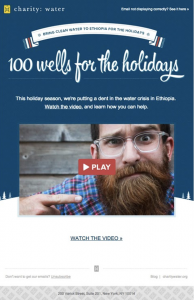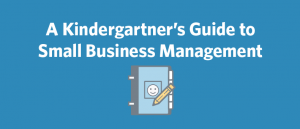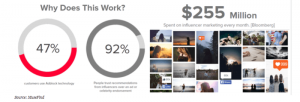— September 13, 2019
I’ve started my marketing career as an SEO analyst. Back in 2010 backlink building process was fairly easy. I’d see people putting together a press release and distribute it to hundreds of no-name platforms. Some would leave a bunch of useless comments jam-packed with links under a blog post. Others would write a low-quality article that looked more like a random bunch of words put together, turn it into a link cemetery and call it a guest post.
Then Google update came into play and showed everyone who’s the boss. No more low quality content, spam in the comments or link farms. “Don’t build backlinks, earn them,” said Google and penalized those who violated the rules. Webmasters bought into this “Content is King” agenda and focused on creating valuable content. They’d spend days or even weeks crafting that super helpful article, put it online and wait for the backlinks to come. Well, they never did.
Turned out, you still need to promote and distribute content if you want Google to notice and rank it. The new link building techniques and approaches emerged that were more mature, complicated and required far more time, expertise, creativity or networking. Today, we have no choice, but to adopt them if we don’t want our content to be buried on the last pages of Google search. In this post we’ll go over backlink building techniques that Chanty and fellow SaaS companies use in 2019 to get to the Google top.
#1 The staircase guest blogging strategy
This is the strategy we rely on heavily at Chanty, it played a major role in getting our team chat from 0 to 10K leads. If you are new to guest blogging, start by reaching out to less popular platforms with the domain authority that is not far from yours. Writing high quality guest content is key here, otherwise you’ll be stuck on the ‘less popular domains’ stage forever. Editors (and readers) love articles based on personal experience. Luckily, every SaaS startup has a story of growth, so it should be pretty easy to incorporate your company experience into an article.
Then, with enough examples of your previous guest posts you can gradually increase the quality of the platforms you are pitching to. This is how Chanty got to publish on top tier platforms like HubSpot, Entrepreneur, Search Engine Journal, Marketo and many more.
Make sure your outreach is personalized and authentic. While using outreach templates can work OK when sending emails to less known websites, editors working for the big names won’t even notice your pitch if you don’t do your homework well. E.g. I had to send three follow ups to the editor at Entrepreneur before she even noticed me. For HubSpot, it was connecting editor on LinkedIn that paved the way for our publication. Get creative, build relationships before pitching. If you want to learn more, read my article on HubSpot where I’ve covered the entire process step by step with the examples of exact pitches I’ve sent to some of the editors.
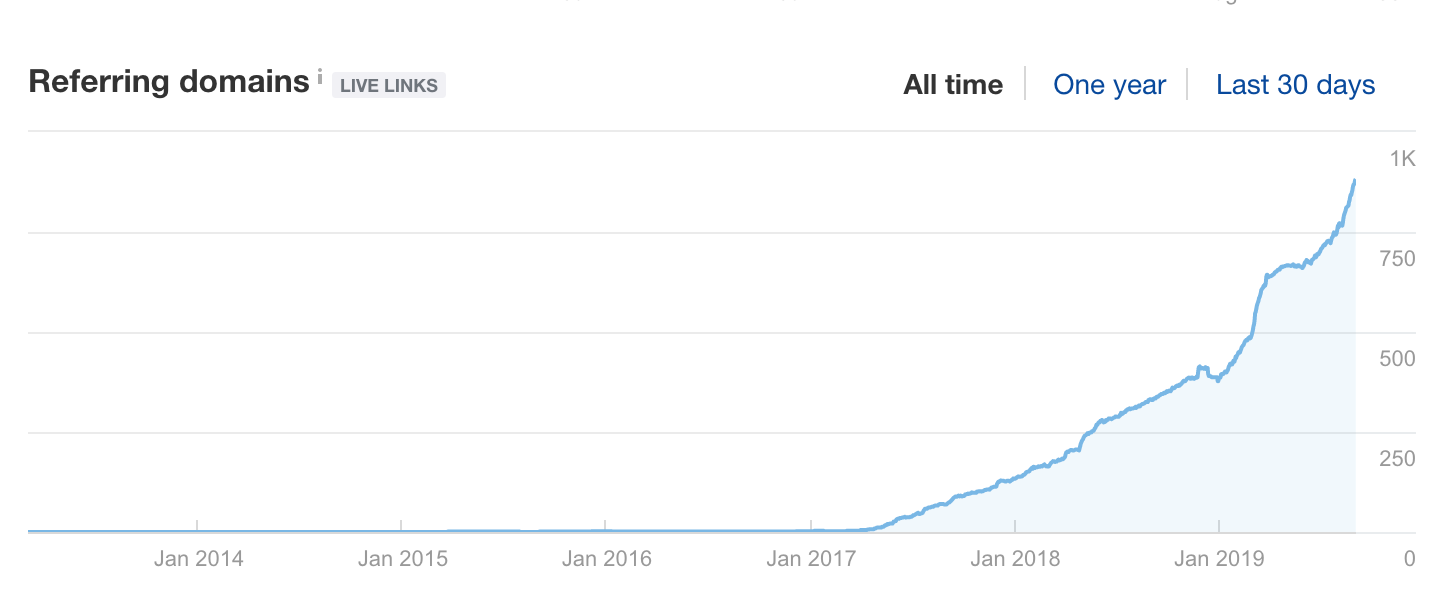
The growing number of domains linking back to Chanty
#2 The Help-A-Reporter-Out (HARO) strategy
It was our second attempt with HARO that turned into a great success. All you have to do is visit helpareporter.com and sign up for their emails. This is a platform where journalists and writers are looking for insights from industry experts. You’ll be getting emails that look like this every day:
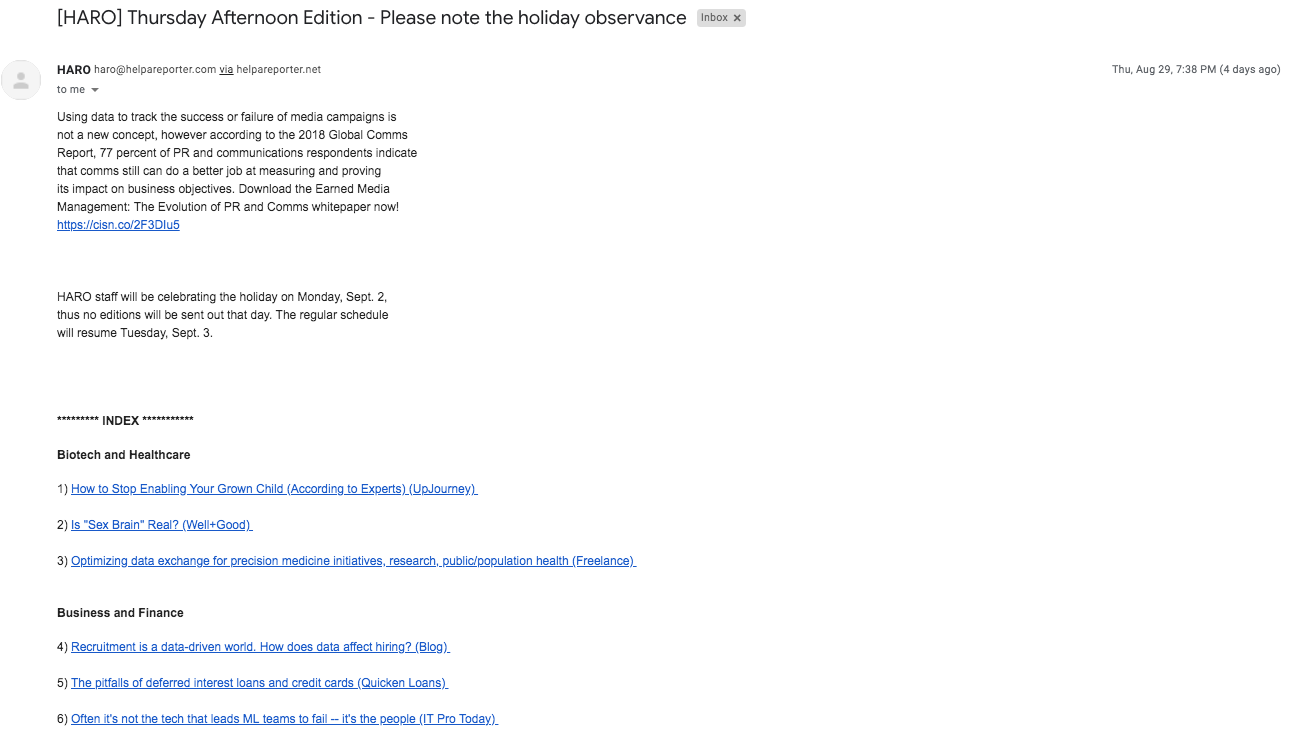
HARO email example
Whenever you see a relevant query, you can submit your answer. If your insight gets chosen by the journalist/writer, you’ll get featured in her article and (most of the time) get a backlink. The conversion rate for our answers is around 10%, so out of every 10 answers we send, 1 gets published. Speaking of results, HARO is responsible for around 5-10 backlinks to Chanty per week. With its help we got featured on American Express, Business Insider and many others.
The results really depend on your answers. We try to answer questions when we know we can provide value and share our expertise. At Chanty, we have two people working on it on a daily basis (this may take up to half of their work day), however, often times we ask our founder, CPO or CTO to share their expertise as well. Just like with previous techniques, we’ve written an article on the entire HARO process, check it out.
#3 The stolen images strategy
We accidentally discovered this strategy when searching for our images online. Chanty is lucky to have an in-house graphic illustrator who makes amazing images for our blog posts. As it turned out, our images got quite popular online and people would just use them without giving Chanty a proper attribution.
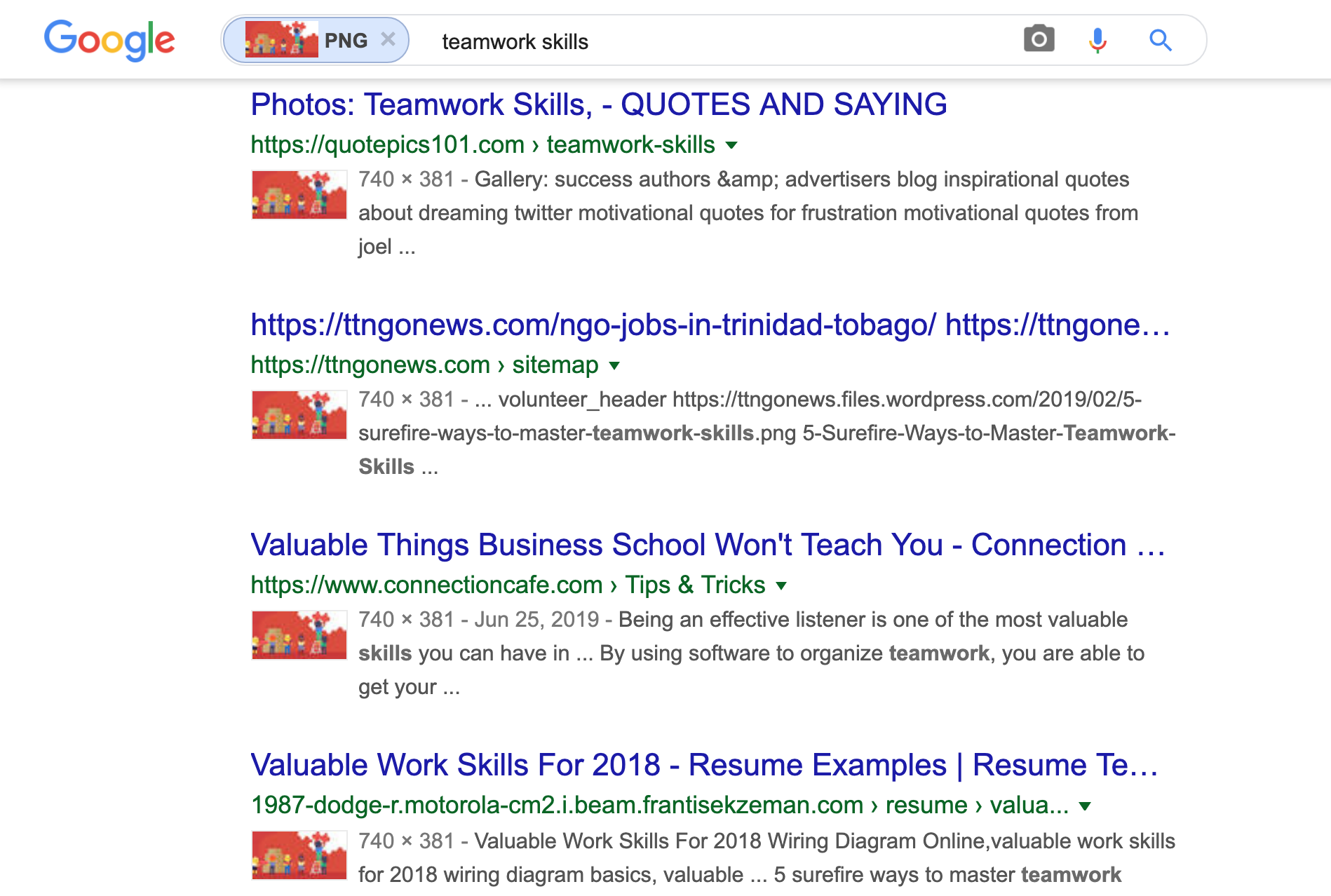
Google image search results for one of our blog images
On a mission to bring justice to the world, we’ve started an outreach campaign asking those who used our assets to put a link back to Chanty. Unfortunately, half of the platforms decided to just delete our image. However, the other half was happy to put a backlink. This approach helped us get plenty of links from a bunch of platforms including Wrike.com. You can read about the steps we’ve taken along with the exact email template we send out in this post published on Foundr.
Bonus tip: CC’ing your lawyer and mentioning this in the email significantly increases the response rate 
#4 The comention strategy
If you write a bunch of guest posts every month like we do at Chanty, sooner or later you realize that writing guest posts is expensive (what some copywriters charge is just insane). So it takes a lot of time, money and effort and all you get is a single backlink. Well, there’s a way to make this process more effective by cooperating with fellow SaaS people.
Start with finding a partner or two (we have more than a dozen by now) who write guest posts on a regular basis. Then, you guessed it, ask them to mention your product in their articles and you’ll do the same for them. This way, with the same amount of effort and money you can double, triple or even quadruple your guest blogging results.
There’s a free tool (sign up is pre moderated) that helps you find partners for this cooperation called CoMention. It also simplifies the whole process so you can track the mentions, keywords and urls. Most importantly, you can copy and paste an article you are working on, click “Find keywords” and it shows backlink opportunities within it so you don’t miss a chance to link back to your partners.
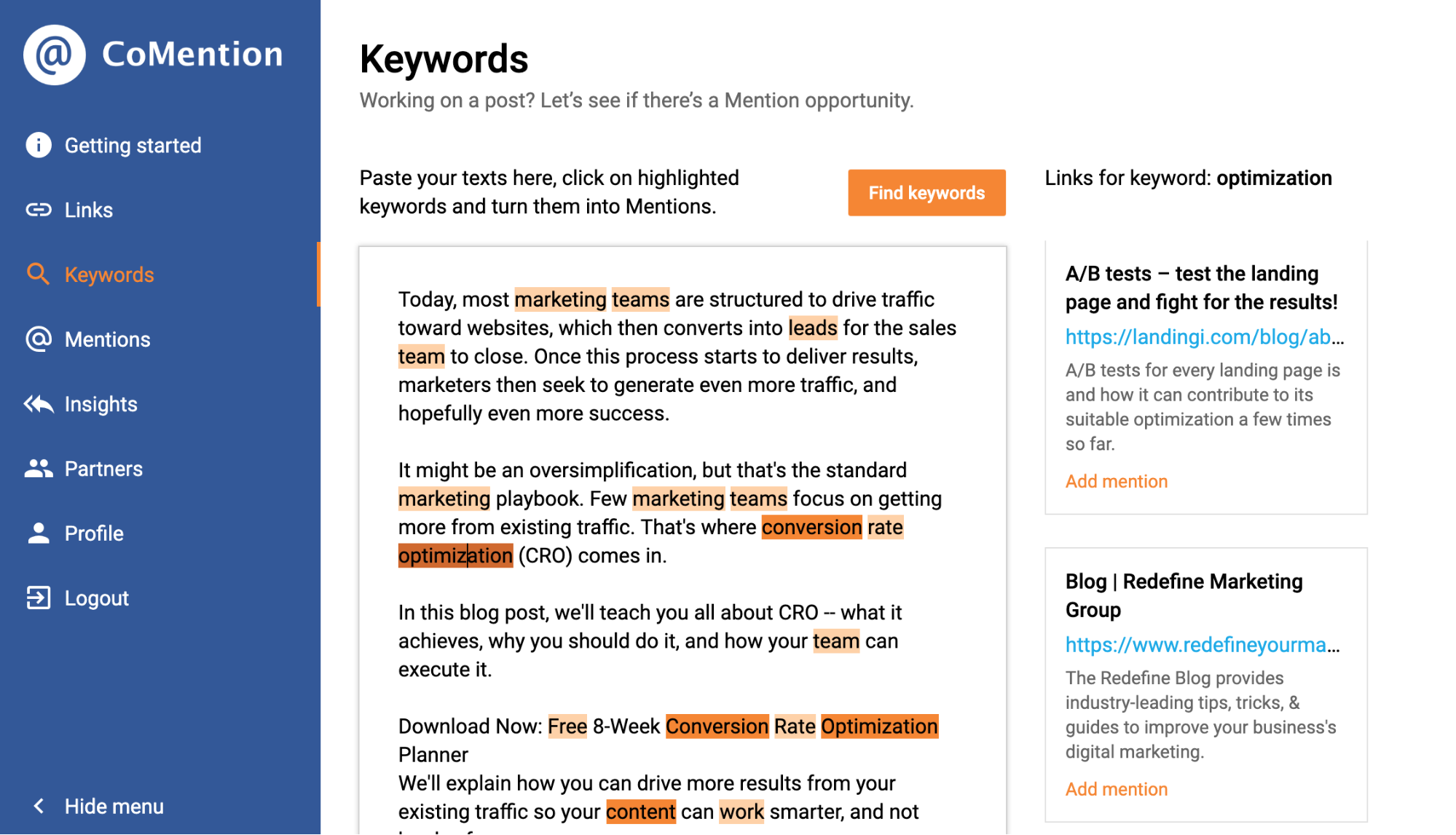
Finding backlink opportunities within your article in CoMention
#5 The mention-me-back strategy
As I mentioned before, we write a good bunch of guest post every month. Naturally, we get to mention all sorts of websites when supporting our arguments, referring to the information source or simply putting up a list of tools together. These websites are not our partners. In fact, some of them (like in the example below) are our competitors. But who said you can’t get a backlink from a competitor? Well, once our guest post is published, or, even better, at its writing stage, we reach out to the platforms we are about to mention and ask if they can link to Chanty from their website:
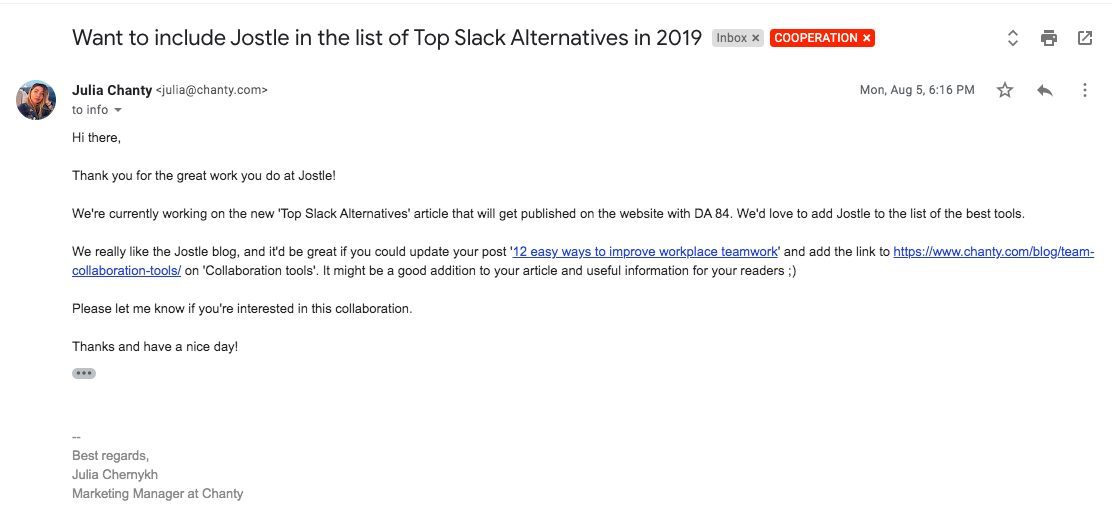
Reaching out to the guys from a product we are about to add to our guest post
The approach works great for us resulting in high quality relevant backlinks in 50% cases. If you are writing guest posts, you should definitely give this strategy a go.
By the way, if you haven’t already, you should join the B2B bloggers boost group in Facebook. One of the greatest implementations of this strategy I’ve seen was by a guy from this group. He was writing a listicle post for high DA websites and suggested to include your website if you link back to his personal blog. Can you imagine the results of this cooperation with a single “50 productivity tools” article? I think it’s simply brilliant, hats off to the guy.
#6 The outdated tools strategy
If you are familiar with team communication market, you’ve probably seen this in the news about a year ago – Slack has acquired Atlassian Stride and HipChat – the two major competitors at the moment. What did it mean for us? The opportunity to get a bunch of backlinks of course.
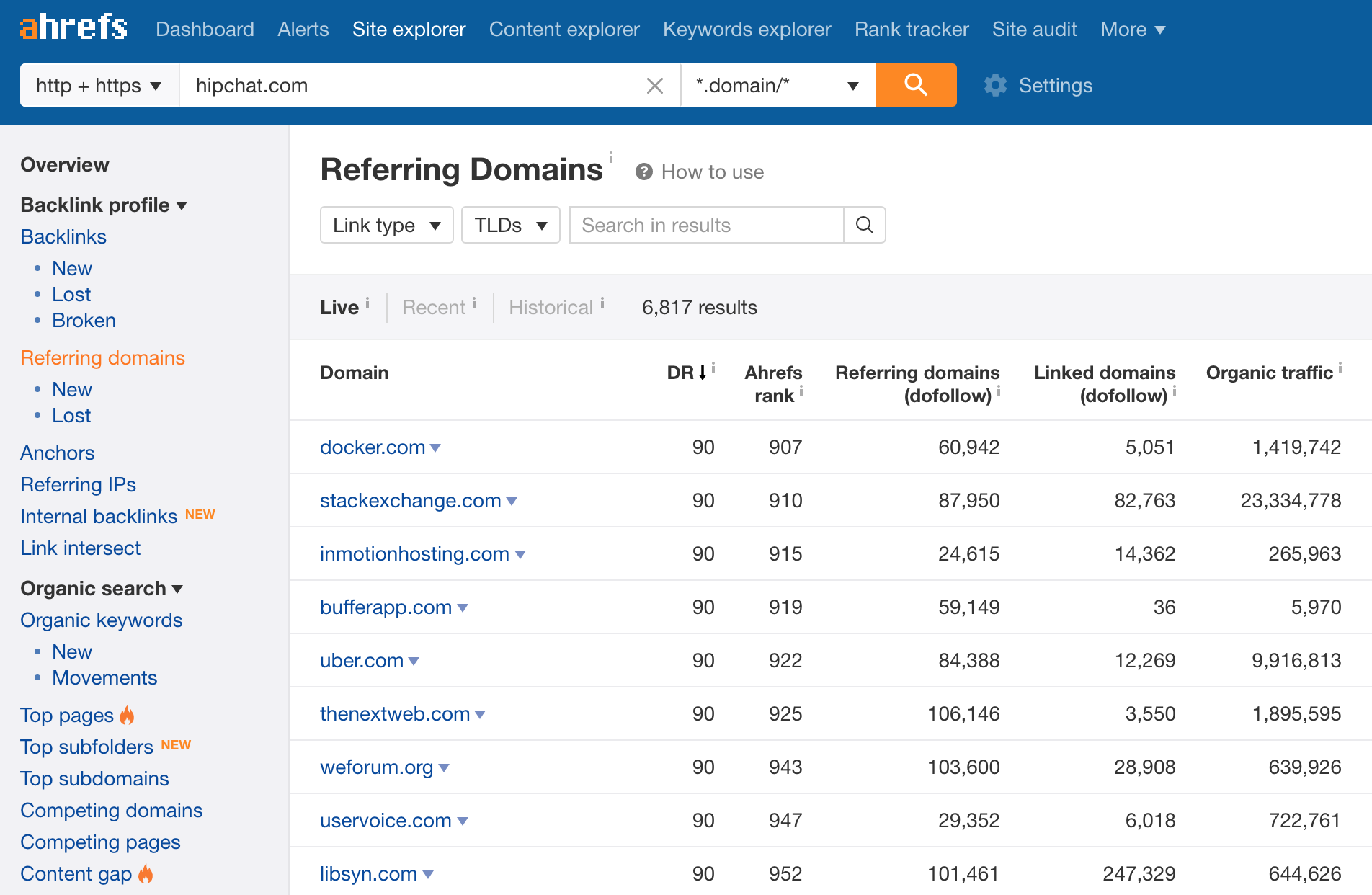
Looking for HipChat backlinks with Ahrefs
We’ve done the search for the domains backlinking to HipChat and Stride and reached out to the platforms saying that they have an outdated link (not broken, just outdated) in the article and suggested to replace it with Chanty – a communication tools that’s well and alive. We’d also include articles from HubSpot, Smart Insights, JotForm, Workzone where Chanty has been featured as a top Slack alternative to bring some social proof.
This approach is very similar to the broken links strategy that you can also successfully adopt for your business. If none of your competitors went out of business recently, look for the broken pages (those with 404 error) of your competitors and give the guys linking back to those a heads up. You can learn more about the broken links strategy in a great post by Ahrefs.
#7 The missing backlink strategy
This is another technique you’ve probably come across. If you are a well-known brand you’re likely getting a lot of mentions in all sorts of articles. Some will have backlinks to your domain, some won’t. Your job is to find those mentions (we set up alerts in Ahrefs) of your brand and reach out every time you see a mention with no backlink to your product. This is an email we’ve received from HubSpot a while ago asking us to backlink. I’m sure for a famous brand HubSpot is, this technique works like magic:
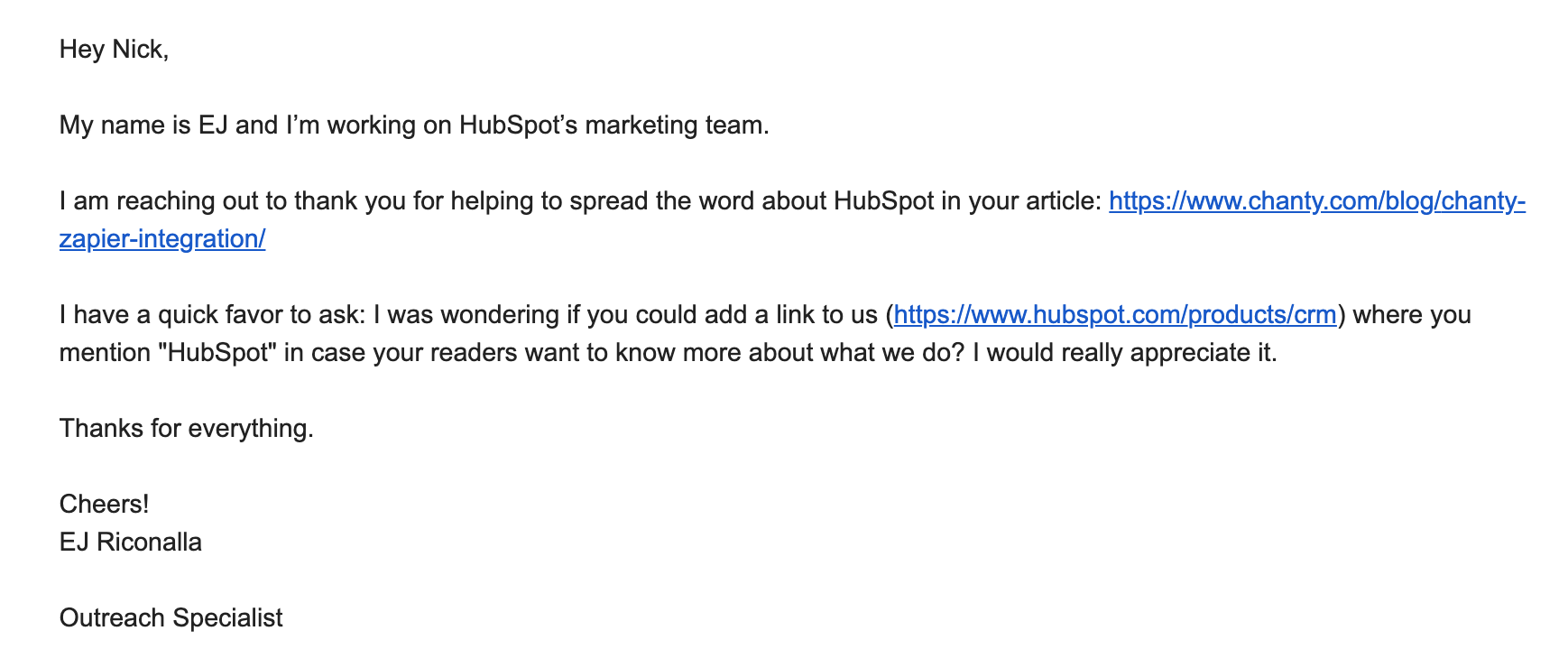
HubSpot email asking for a backlink from our website
The less-known brands that don’t get mentioned online too often can simply reach out to a website asking for a backlink. If this is your case, make sure you have a great piece of content in hand that will add value to the platform you are reaching out to. E.g. this is exactly how infographics by EzCater got to our blog article – we got an email asking us to check it out and, if possible, add to our blog post and… we just loved it.
#8 The industry podcasts strategy
Our friends at Better Proposals have seen pretty good results with this technique. If you can speak on the topic you are pitching without weeks of preparation for about 20-50 minutes, podcasts could be a great choice for you. Getting an interview on podcasts is a process very similar to guest blogging. Just like with guest blogging, you get all sorts of perks like establishing industry expertise, getting referral traffic and increasing brand awareness. The steps you should take are simple:
- Research the industry podcasts
- Pitch your topic to the host
3. Get interviewed
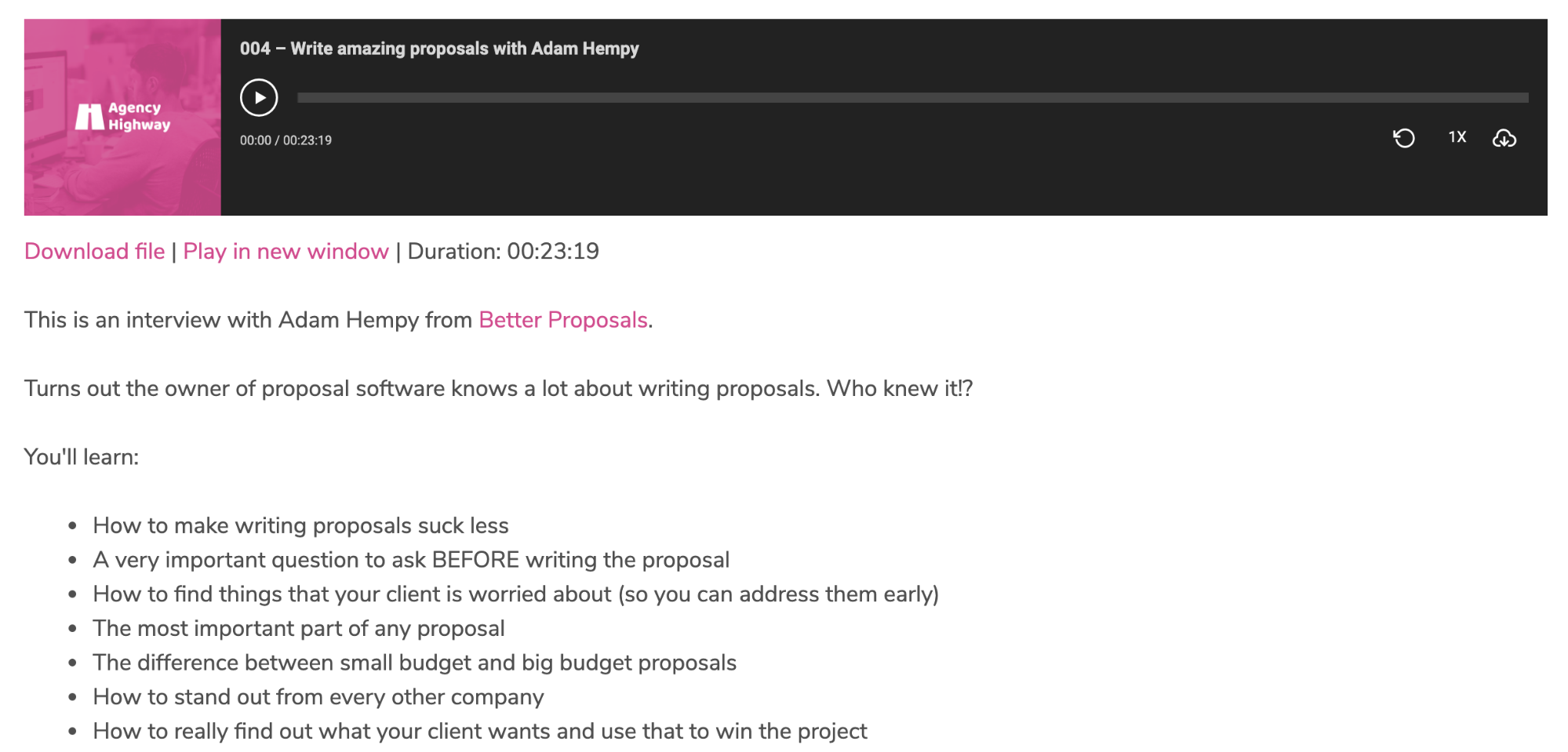
The published audio interview with Adam Hempy, CEO and founder of Better Proposals
Every podcast has a description or, sometimes, even a text version of the audio. To ensure the host will backlink to your website, use this little trick that Adam has shared with us – mention an article/ebook/report or whatever you want to link to in the interview. Say you’ll leave a link to it in a description. This way, you won’t be negotiating with the host about putting a link to your website. There’ll be no other choice.
#9 The skyscraper technique by Brian Dean
A few years ago a well-known SEO expert Brian Dean coined the concept of “Skyscraper link building technique”. It’s about writing content better than your competitors – more engaging, educating, covering more aspects than those search results already ranking in Google top. Then, you are supposed to reach out to the websites backlinking to your competition, astonish them with your outstanding content to the point where they have no choice, but backlink to your post.
I am a big fan of Brian Dean’s, his content is very useful and inspiring. At the same time, we had to realize – what works for marketing, doesn’t always work for the rest of the industries. Skyscraper link building technique simply didn’t work for us. We’ve even written about our failure on Search Engine Journal. However, I don’t want to discourage you from giving it a try. Let’s see if this technique is something you should spend time and effort on:
- Does your post solve a business issue and your findings could be implemented right away to improve someone’s business?
- Can you write a post that’s head and shoulders above everything that’s already on the Google top 10 for your keyword?
- Do you have a recognizable brand?
- Are you a lucky guy/gal?
If you answered Yes to all four, chances are Skyscraper link building technique will be a great fit for you.
#10 The backlink exchange strategy
This technique is old as the hills. I link to you, you link to me – simple as that. We get offers for backlink exchange every week. Sounds like a great way to grow your backlink profile, right? Well, I am not too excited about this approach. First off, Google states that excessive link exchanges, could “negatively impact your site’s ranking in search results”.
It gets even worse if you exchange backlinks with the low quality or irrelevant websites. So the rule of thumb here is not making this technique your priority. While backlink exchanges between Chanty and relevant niche websites may occasionally happen, we prefer to avoid this practice whenever we can. Instead, when we get a backlink exchange offer, we suggest to mention the website that’s reaching out in our future guest posts.
#11 The PBNs strategy – the one you should avoid
Since I’m writing the Ultimate guide on backlink building strategies for SaaS, I thought I’d cover PBNs as well as why you should stay away from them. Just like every other SaaS marketing person out there, you’ve probably been approached by a foreign stranger on LinkedIn offering you “guest posts” or “websites” or just “backlinks”. If you dig deeper, you’ll find out a network of low-quality, no-traffic websites created solely for the purpose of selling backlinks.
I have a good old friend who is still using PBNs to promote his clients’ websites. He’s a frequent guest at SEO conferences, covering his latest success stories on incredible growth. Being a curious gal that I am, I’ve called the guy asking him all things PBN. With a smart approach, he said, PBNs can help you a great deal in SEO. Luckily, he’s never got exposed and banned.
I’d say the keyword here is “Yet”. It’s just a matter of time when Google spots another network and shuts it down ruining your business. Although it still works for some, I wouldn’t risk years of our work getting hard-earned rankings, building website reputation and trust to lose it all overnight. So next time someone approaches you with a “backlinks” offer on LinkedIn, the best thing you can do is to ignore the message.
In the end…
As you can see, backlink strategies, no matter which one you choose, go hand in hand with great content. Guest blogging? You need to write great content to achieve impressive results. HARO pitches? Great content again. Backlink cooperation with other SaaS partners? Impossible without writing content first. I hope that creating helpful, insightful and valuable content will become your focus after reading this article. It will form the basis for significantly improving your backlink profile.
Have I missed a backlink strategy? Please, share your proven ways to grow backlinks in the comments below. If you learned something new from my post today, please share it further so it helps more SaaS people. Good luck with your backlinks! 
Digital & Social Articles on Business 2 Community
(89)
Report Post




